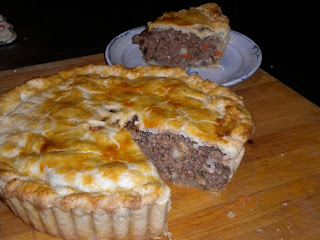Next Sunday will be Easter, a time of renewal and rebirth, a harbinger of spring, and lengthening days with the sun moving higher into the sky. The daffodils are up, as is our garlic, the ice is off the lake, and while sugaring is still ongoing, the buds are starting to appear on the trees, so the end is in sight.
Easter, a moveable feast, falls on the first Sunday following the full moon after the vernal equinox, thus is moves around from late March to late April each year. Passover roughly coincides with Easter, and fell on the full moon on April 30th this year. Both religious holidays are a time of feasting, celebration, family and friends.
In many regions early spring vegetables like asparagus, fiddleheads, mushrooms and ramps are appearing, and sprightly lambs frolic in the barnyard and peeping chicks are scurrying beneath a warming light. Plants are germinating in flats in a sunny window and the parsnips have been dug.
Not everyone likes lamb, the meat of sheep. Some dislike the smell, which primarily emanates from its tallowy fat while it is cooking, and some find the taste of the meat is too strong. Our local lamb is usually one month old to twelve months at slaughter, but in other countries they eat mutton and hogget, older sheep, both male and female up to four years old or more. These latter types are stronger in flavor than the lamb locally produced. New Zealand lamb, often killed at four months, is quite mild in taste, and only available frozen.
Sheep are grass eaters, but are often finished with grain over the last month before slaughter, producing a fine-grained flesh. As the animal ages, its flesh gradually changes from a pale pink to a dark red, and its flavor intensifies. As a red meat, it likes to be cooked rare (125 degrees) to medium (160 degrees) or anywhere in between. Legs and racks should be allowed to rest for 15 minutes or so before carving to allow the meat juices to redistribute themselves, resulting in a moist, juicy serving.
Lamb chops are cut from the loin, the most prized chops, and can be pan-fried, broiled or grilled, and from the shoulder, which require braising to become tender. The shoulder and shanks are also braised, and result in luxuriant sauces, which thicken themselves when reduced. Ground lamb can be combined with pork and beef, made into lamb meat loaf, grilled as burgers, or made into a meat sauce or meatballs. In the Italian section of Arthur Avenue in the Bronx, meat markets sold the lamb head to the Italian grandmothers of the neighborhood, along with whole baby lambs for Easter dinner.
As lamb is somewhat fatty, traditional accompaniments like mint jelly are meant to “cut” the fat, and in other cultures lemons, wine, vinegars, and dried fruits like quince and apricot are common with lamb. We think of garlic, rosemary and thyme to flavor our lamb, but anchovies are used in Italy and paprika in Spain and Portugal. Lamb is raised worldwide and eaten throughout the Europe and the Mediterranean, the Arab and Muslim lands, India, Australia and Africa, so it is a universal food.
Sometimes we have ham at Easter, but this year it’ll be lamb. Yum!



























